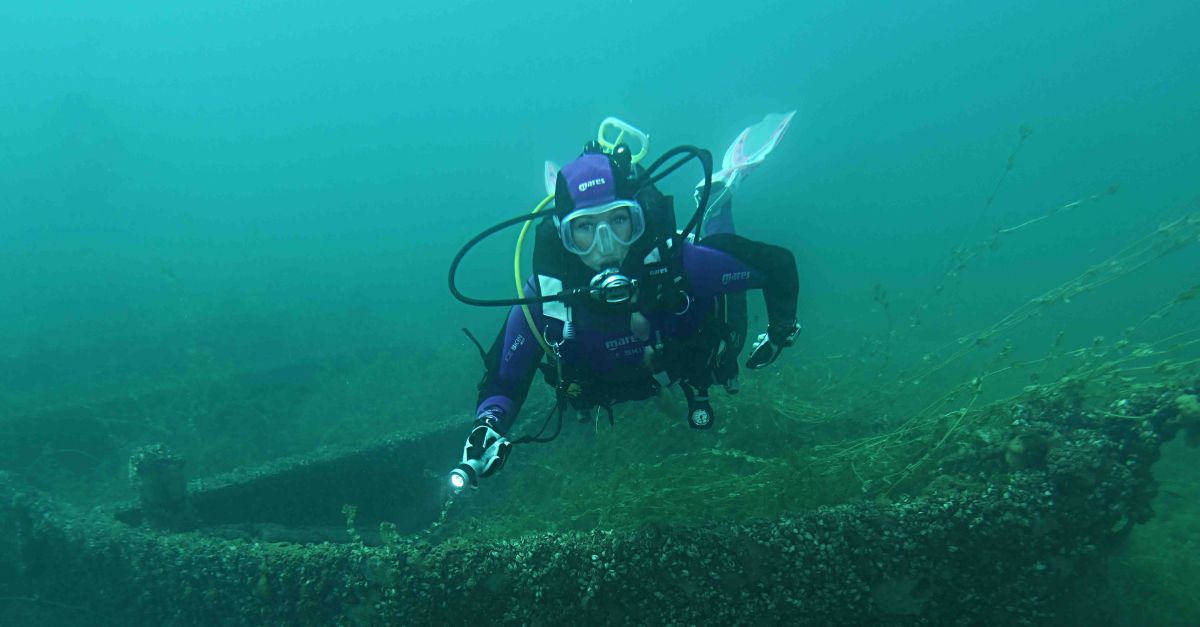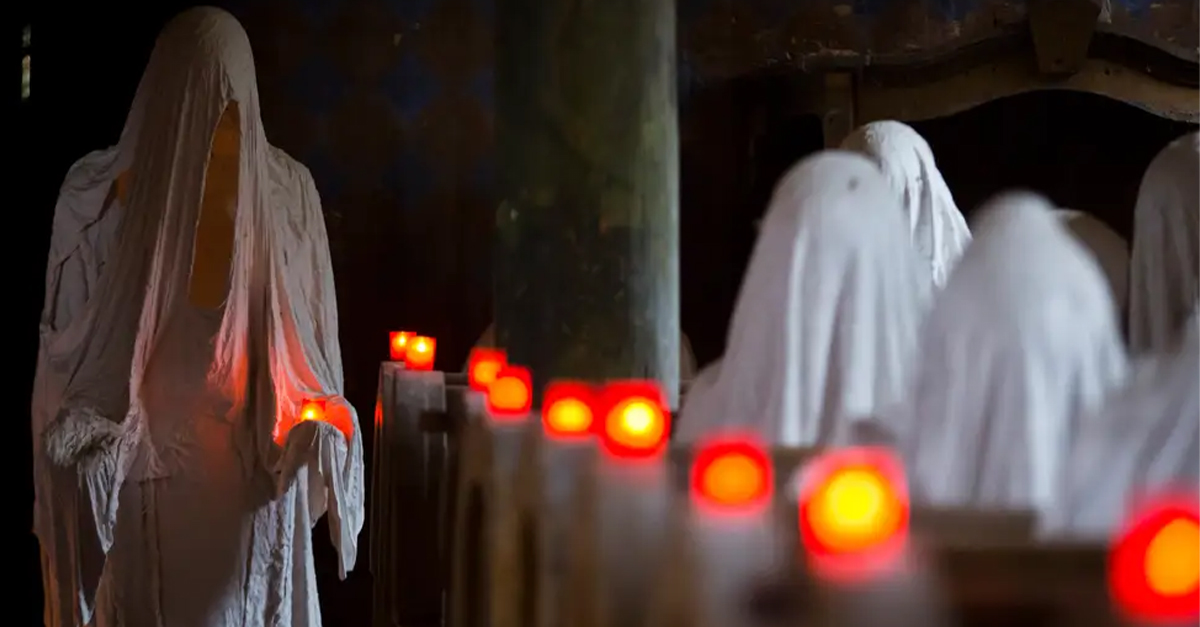Neolithic Finds
Most people saw a lake. A few saw something more. Now, after years of digging, brushing, and guessing, a new story is surfacing—one built on wood, water, and much more.

Discovery Announcement
Deep beneath Lake Ohrid's "Pearl of the Balkans" waters, Swiss and Albanian archaeologists have unearthed one of Europe's most ancient lakefront communities. Professional divers work three meters underwater, carefully extracting wooden stilts and artifacts from this 8,000-year-old settlement.
 U.S. Navy photo by Mass Communication Specialist 1st Class Jayme Pastoric, Wikimedia Commons
U.S. Navy photo by Mass Communication Specialist 1st Class Jayme Pastoric, Wikimedia Commons
Geographic Location
Situated along Lake Ohrid's Albanian shoreline, this prehistoric village occupies prime real estate on the mountainous border between Albania and North Macedonia. The settlement sits near Lin village in the Pogradec region, where crystal-clear waters have preserved wooden structures for millennia.
Lake Formation
Lake Ohrid itself tells an epic geological story from over one million years ago. Born from tectonic forces during Earth's dramatic reshaping, it became Europe's deepest and oldest surviving lake. The unique ecosystem harbors more than 200 endemic species found nowhere else.
Endemic Biodiversity
This place hosts an extraordinary collection of 200 unique and rare endemic species, including unique fish, mollusks, and sponges that evolved in isolation. The Ohrid trout complex and specialized bottom fauna form a living laboratory that has managed to remain relatively stable.
NASA Recognition
In 2010, NASA honored Lake Ohrid's global significance by naming one of Saturn's moons Titan's methane lakes "Ohrid Lacus" after this ancient European water body. The naming tribute acknowledges this lake’s importance not only on Earth but also as a reference point in planetary science.
 NASA/JPL-Caltech/USGS, Wikimedia Commons
NASA/JPL-Caltech/USGS, Wikimedia Commons
Dating Precision
Radiocarbon dating pinpoints the settlement's age between 5800 and 6000 BC, while dendrochronology provides year-by-year accuracy through tree-ring analysis. Swiss archaeologist Albert Hafner confirms this predates Mediterranean and Alpine lake dwellings by several centuries. More than 1,000 wood samples have been collected.
 Radiocarbon Dating Gets a Postmodern Makeover by U of A Research & Partnerships
Radiocarbon Dating Gets a Postmodern Makeover by U of A Research & Partnerships
European Context
Before this discovery, Europe's oldest known lake settlements were found in Italy's Alps. The Lin site pushes back lakeside living by 500–800 years, fundamentally changing archaeological timelines. This makes it a continental game-changer that forces historians to reconsider how quickly sophisticated communities developed here.
 Gerhard Schauber, Wikimedia Commons
Gerhard Schauber, Wikimedia Commons
Settlement Scale
The underwater village once sprawled across approximately six hectares, housing an estimated 30 to 40 wooden structures built from oak, pine, and juniper trees. Archaeological mapping highlights a community layout with organized housing patterns. After six years of excavation, researchers have explored merely one percent of the total site.
 Einsamer Schütze, Wikimedia Commons
Einsamer Schütze, Wikimedia Commons
Population Estimates
Between 400 and 800 residents called this lakeside community home during its peak occupation from 6200 to 4000 BC. The settlement wasn't continuously inhabited for two millennia; instead, it saw the construction of many villages over time. Folks lived in houses that were structured to withstand seasonal flooding.
Architectural Innovation
Building houses on stilts above water required extraordinary engineering skills for Neolithic communities. As per sources, villagers drove thousands of wooden piles deep into the lakebed, forming stable foundations for their elevated dwellings. These weren't simple huts but complex structures with beaten clay floors.
 August Ignaz Grosz, Wikimedia Commons
August Ignaz Grosz, Wikimedia Commons
Construction Phases
Dendrochronological analysis also brings to light multiple building episodes spanning thousands of years, from the Neolithic to the Bronze Age periods. The site shows intense settlement activity with construction phases occurring around the middle of the 5th millennium BC, then later during 1800, 1400, and 1300 BCE.
 Orgullomoore, Wikimedia Commons
Orgullomoore, Wikimedia Commons
Defensive Systems
Perhaps most intriguing are the 100,000 defensive spikes archaeologists spotted driven into the lake bottom around the perimeter. These massive wooden barriers required cutting down entire forests, suggesting the community faced serious threats. The fortress-like defensive system remains mysterious, though.
 Wolfgang Sauber, Wikimedia Commons
Wolfgang Sauber, Wikimedia Commons
Resource Management
Well, creating those defensive palisades meant organized deforestation on an industrial scale for Neolithic times. Communities had to coordinate logging operations, transportation of timber, and precise placement of wooden stakes. This level of resource management indicates advanced social organization and planning capabilities.
Agricultural Evidence
Excavations have also uncovered various seeds, grains, and plant remains, indicating that these lake dwellers were among Europe's pioneering farmers. The location represents a critical transition point where Western Asian agricultural techniques first took root in European soil over 8,000 years ago.
Botanical Analysis
The botanical analysis of the prehistoric lakeside community near Lin, Albania, reveals the cultivation of emmer wheat, barley, and legumes among the early agricultural crops. Some inhabitants themselves went from being just hunter-gatherers to farmers, cultivating cereals like emmer wheat and barley.
 Forest and Kim Starr, Wikimedia Commons
Forest and Kim Starr, Wikimedia Commons
Livestock Domestication
Animal bones found scattered throughout this area near Lin, Albania, include those of domesticated animals such as cattle, goats, piglets, and sheep, as well as wild species. These findings suggest that the residents engaged in animal husbandry in addition to hunting and gathering.
Artifact Collections
Underwater preservation has created an archaeological treasure trove including ceramics with detailed carvings, copper objects, and wooden tools rarely found at terrestrial sites. Professional divers retrieve artifacts using specialized techniques to prevent damage during extraction.
 Dwi sumaiyyah makmur, Wikimedia Commons
Dwi sumaiyyah makmur, Wikimedia Commons
Research Collaboration
The EXPLO project represents unprecedented international cooperation among universities in Bern, Oxford, and Thessaloniki, funded by a prestigious € 6.4 million ($7.5 million) European Research Council grant. This five-year interdisciplinary initiative combines underwater archaeology with ecology, biology, and climate science for the first time.
 Oleksandr (Alex) Zakletsky, Wikimedia Commons
Oleksandr (Alex) Zakletsky, Wikimedia Commons
Preservation Conditions
Lake Ohrid's oxygen-free environment has crafted a prehistoric time capsule where organic materials survive intact for decades. Unlike terrestrial locations where wood typically decomposes, underwater conditions prevent bacterial decay, preserving wooden structures with extraordinary detail. This preservation allows scientists to study seasonal growth patterns in timber.
Dendrochronological Analysis
Tree rings function as nature's calendar, with oak being pretty reliable. Researchers describe it as “precise like a Swiss watch”. Each annual growth ring records the climatic conditions of the year. Over 1,000 wood samples have been collected, with pine wood comprising 60 percent of the findings.
 James St. John, Wikimedia Commons
James St. John, Wikimedia Commons
Migration Patterns
These lake dwellers were part of the great Neolithic migration that brought agriculture from Western Asia into Europe over 8,000 years ago. Genetic studies confirm that Early European Farmers migrated from Anatolia through the Aegean and into the Balkans, carrying domesticated plants and animals.
 Detlef Gronenborn, Barbara Horejs, Börner, Ober, Wikimedia Commons
Detlef Gronenborn, Barbara Horejs, Börner, Ober, Wikimedia Commons
Technological Applications
Bayesian radiocarbon modeling allows precise chronological anchoring of floating tree-ring sequences. It is said that researchers make use of increment borers to extract pencil-thin wood cores without damaging ancient timbers, then analyze cellular structures under microscopes to unlock secrets of prehistoric construction techniques.
Future Investigations
Albanian archaeologist Adrian Anastasi estimates that fully exploring this vast underwater site could require several decades of continued research. Each excavation season yields valuable new information about ancient architecture and community organization. Scientists plan a systematic expansion of excavation areas while developing new underwater archaeological techniques.
 Elpida Hadjidaki, Wikimedia Commons
Elpida Hadjidaki, Wikimedia Commons
International Recognition
Albanian Prime Minister Edi Rama publicly celebrated the discovery's "undisputed historical and archaeological value" on social media. At the same time, Swiss Ambassador Ruth Huber personally visited the excavations to witness the groundbreaking research firsthand. The site has attracted the interest of European cultural institutions.
 PRESIDENT OF UKRAINE VOLODYMYR ZELENSKYY Official website, Wikimedia Commons
PRESIDENT OF UKRAINE VOLODYMYR ZELENSKYY Official website, Wikimedia Commons
















